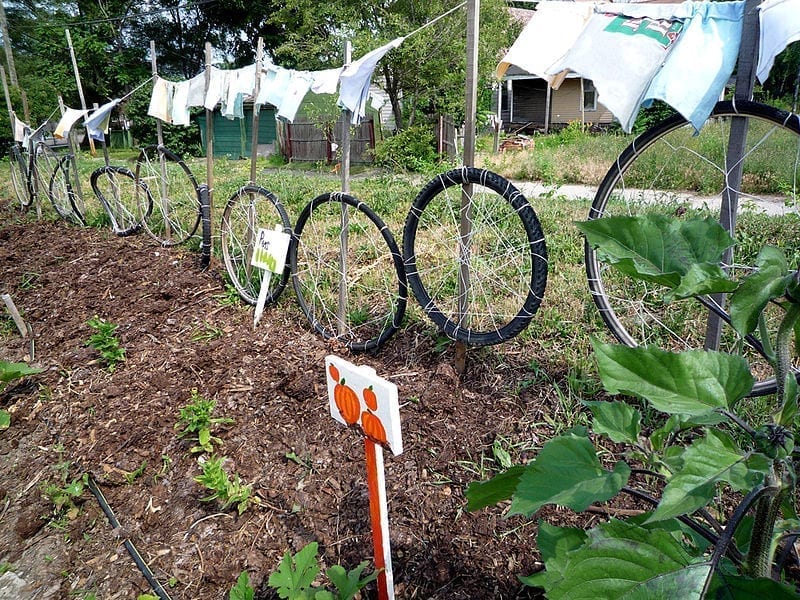Urban farming has been on the radar for years, and it’s not going away. Instead, communities around the U.S. are solving problems by making it their own.
Urban farming seems so 2010. That’s when you couldn’t swing a hydroponically grown tomato vine without hitting someone who was, wanted to be, or talked about urban farmers being the Next Big Thing. However, cities and suburbs are full of people who need to eat, so urban farmers are still busy growing food and a bumper crop of them are innovating new ways to bring nutrition and social justice to their neighbors.
People in Atlanta, GA, are about to gain access to more fresh food thanks to a $50,000 grant from the National Association of Conservation Districts. This money will go towards converting three utility easements into fifteen acres of urban agriculture. The Mayor’s Office of Resilience sees urban farming as a way to bring healthy food within half a mile of 75% of the city’s residents by 2020.
In Buffalo, NY, they’re starting to take the idea of “grow food, not lawns” seriously. Fleet farming, which took off in Orlando, Florida in 2013, is a decentralized urban farming model where homeowners provide all or part of their yard to pedal-powered farmers who maintain a series of gardens throughout a roughly five-mile radius. The food is then sold in farmer’s markets and restaurants in the area. Growing and transporting food this way solves many problems, from the need to mow wasteful lawns, to avoiding fossil fuels, to helping the local economy.
During the California drought, one innovative urban farmer in the Bay Area produced fish and greens using far less water than traditional farms. Ken Armstrong of Ouroboros Farms was inspired by watching a YouTube video about Will Allen, who brought urban farming to Milwaukee, and decided to take up aquaculture. Cycling water through a system of fish tanks and pebble-filled beds of greens provides nutrients for the plants while cleaning water for the fish. On just a third of an acre, Armstrong produces five acres’-worth of lettuces using 2/3 of a gallon of water per head, compared to 12 gallons for traditionally farmed lettuce.
Urban Farmer Starting His Own Revolution, posted by the Oprah Winfrey Network
Since the urban farming trend has been catching on for several years now, people are becoming more hip to the value of having high quality, local food readily available. The next wave of urban farming may be the “agrihood.” Agrihoods are planned communities that include both residential areas and agricultural land. Residents take part in the process and enjoy the fruits of their labor. One such agrihood, in Detroit, concentrates on resilience through sharing resources, sustainability, and forming community connections. Another, a more upscale development in Las Cruces, NM, sits among custom built homes and optimizes for unusual produce and aesthetic land use. Either way, agrihoods are an old way of life that people are rediscovering in new times.
Finally, out of Dallas, TX, comes a story about the big Texan heart. Big Tex Urban Farms, at the site of the Texas State Fair, is less about profit and more about feeding the hungry. The State Fair is the big annual fundraiser for the urban farming venture, but that means that the entire farm has to move during the September fair season. That’s why they designed the mobile planting boxes that also form the heart of their urban farming outreach. Those gardening boxes are distributed to schools and community organizations, along with soil and seeds suitable for the Dallas climate, as a way of letting people try their hand at growing food risk-free. If everything works out, new urban farms hive off of Big Tex. And if they don’t, the boxes can be returned to the state fairgrounds.
As Owen Lynch of Big Tex Urban Farms says, “A food desert is a health desert is a job desert is an infrastructure desert.” Next generation urban farming is taking root, contributing to communities at the grassroots level, where people are learning to take care of themselves – and each other.
Related: Distributism: An Old/New Economic Answer


Join the conversation!